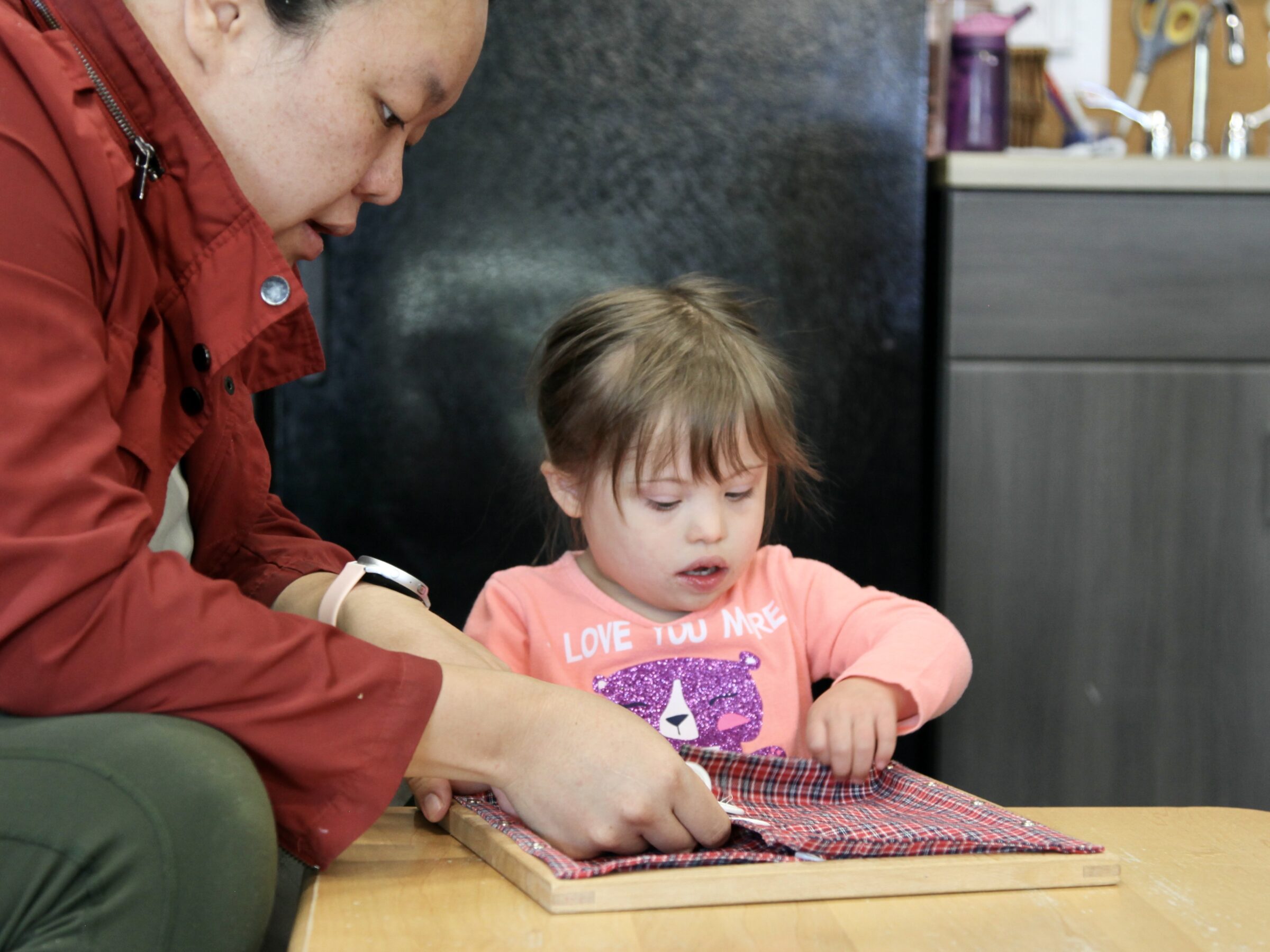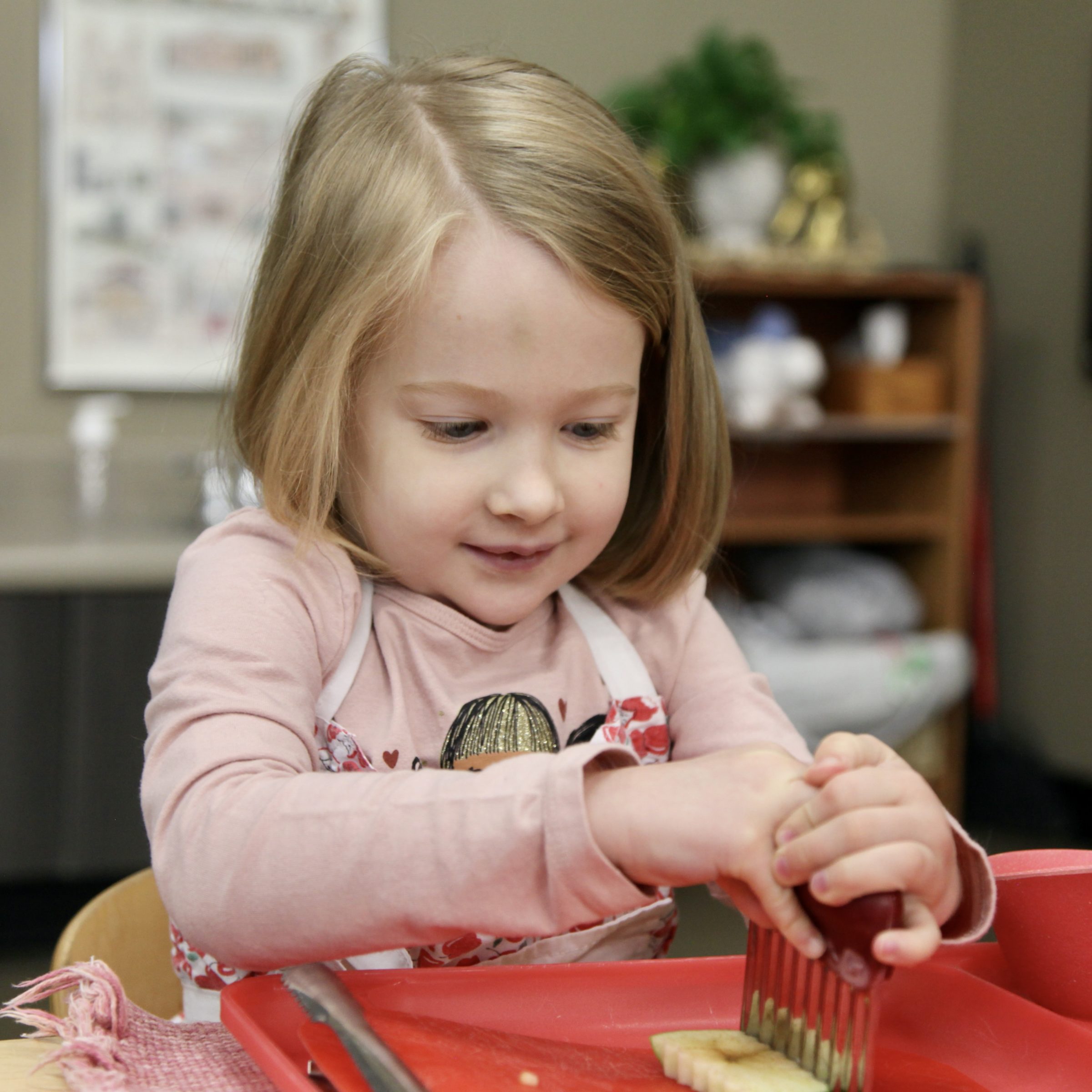Practical Life
Other Good Things

This is a little bit longer blog post than is typical at Baan Dek, but Charlotte Wood presents her thoughts on the foundation of Montessori, and we couldn’t resist posting the text in full. Coupled with the text, you’ll notice a photo of a soon-to-be-Montessori student, whose parents attended our first workshop. They sent along this image, thanking Montessori for helping them, to help their daughter. She dressed herself this morning!
Now, here’s the text: “The Montessori Primary classroom is divided into four areas of work — Practical Life, Sensorial, Language, and Mathematics. Practical Life is the foundation of all further work in the Montessori Casa community. In many classrooms, as it is here, it is the first area that the child walks through when entering the classroom. This is particularly appropriate, since it is through the skills that the child gains in this vital area that all their future work is made possible.
Simply, the child gains two major types of skills through their work in this area: Direct and Indirect. Direct skills the child gains are the overt purposes of the material; they can also be viewed as that material itself. Indirect skills can also be seen as preparations for further work in the classroom.
All materials in the Montessori classroom are important because they stand alone and because they incrementally prepare for later work. Every child begins with the aptly named Preliminaries, or initial skills the child will need to do many other materials, particularly in Practical Life — pouring grains or water, folding, carrying a tray or a pitcher of water. Many Practical Life materials give to the child the Care of the Environment — scrubbing tables, sweeping, dusting — or Care of the Self — hand washing, any of the dressing frames with culturally appropriate clothing fasteners, or even sewing. The child learns the Control and Coordination of Movement that is so important for being able to carry countless trays, for being able to count the thirty-foot-long Thousand Chain, for being able to read and act out Action Cards (the way they EXPERIENCE the verb), even for being able to sit still, through Walking on the Line and The Silence Game. The classroom functions as a living community filled with autonomous individuals each having the best interests of the whole as their ultimate credo through exercises in Social Relations or Grace and Courtesy.
Practical Life is Montessori’s response to the child’s demand for independence, their request to “help me to do it myself.” The movement in Practical Life is what allows the child to center their personality, to experience the pattern of work that is so crucial for participation in larger, more academic lessons, to process an experience that might otherwise be completely cerebral. Repetition is fundamental to every activity, regardless of need. This helps the child hone an action, and allows the child to do activities for the process, rather than the product. Children do the Practical Life activities independent of need, engaging concentration and repetition without any notice of the utilitarian purpose of the activity. For example, children initially do not wash tables because the tables are dirty, though the five-year-old child might. The three-year-old child washes tables to integrate cross-body movement, to work on coordinating their balance as they shift their weight left to right, to experience the science of soap suds with a vigorous motion as opposed to a controlled one, to see the effects of warm versus cold water, to repeat top-down left-to-right movement over and over and over, to see the difference between dirty, wet, soapy, and dry surfaces.
Indirect Preparation involves mastering a simpler activity to prepare for a complex, larger activity, and is no less important a result of Practical Life than the fact that children know how to keep their space tidy, organized, and respected. There is a pattern in our culture that things move left-to-right, top-down. The two-and-a-half year old experiences this first in Practical Life, where they might dust a shelf. They don’t know, nor do they need to know, that this will be vital later in understanding literacy, in reading place value, in systematically organizing their mind. The child is honing their sense of touch when they squeeze all the water out of a sponge, which will be so helpful to them in holding a writing device or even using a computer.
Part of the beauty of the Practical Life materials is that they are mostly created by the teacher to meet the needs of the children. Practical Life materials come and go as a skill is mastered by the group or needs refreshing, as a need is identified. They reflect the cultural experience of the group and the expectations of the teacher. This is why they are also so appropriate for integrating into home life, to aid the child’s quest of mastery of their Self and their goal of Functional Independence, to be able to do something for one’s self by one’s self without being a burden to others.
Help with meal preparation is often one way families integrate Practical Life principles into their home. If your family eats a meal together, what are some ways your child could participate in the process? Even young children can be skilled at cutting foods, such as mushrooms, and can handle a small knife, such as a fruit knife, with caution. They can help wash vegetables for dinner, and small colander is manageable for small hands and muscles. They can help set the table, which is also engaging the math principle of one-to-one correspondence, the way the child first experiences mathematics, and the sensorial principle of spacial awareness. Children can help clean spills with a small bucket and sponge. They can tidy the table after dinner with a crumber, or with a small broom and dustpan used only for the table. More activities can be created easily, and we are happy to talk with you about how to create these types of materials if you are interested.”
By Charlotte Wood.
Written by:
Baan Dek



